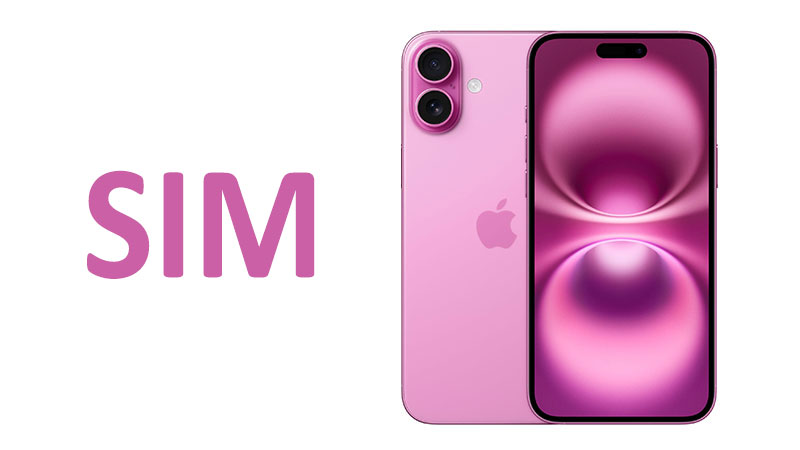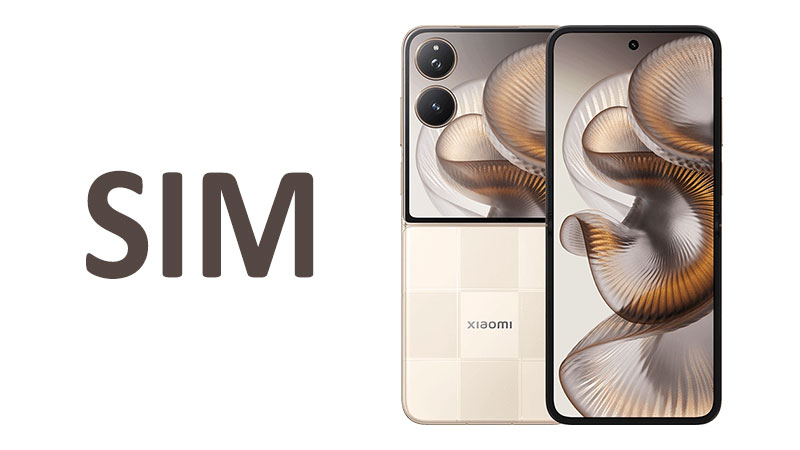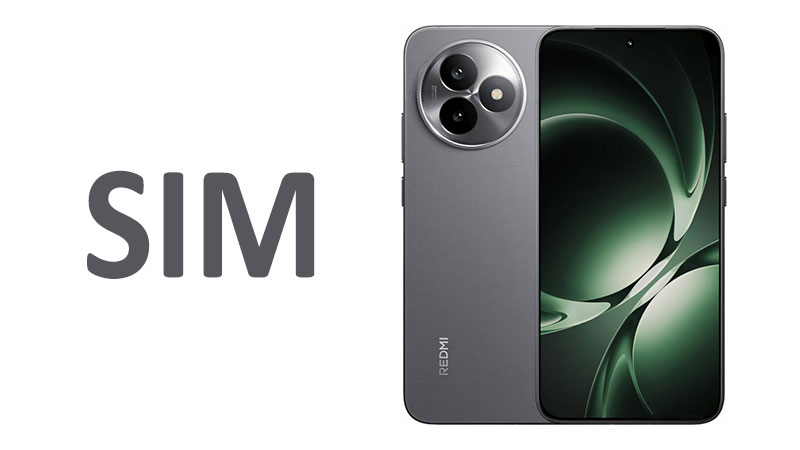The Apple iPhone 16 Plus SIM architecture and connectivity suite represent an important technological step forward. Understanding these features is critical for today’s global smartphone user. This comprehensive article explores the device’s regional SIM configurations. It also details the advanced wireless and wired technologies. We will examine how these specifications impact daily use and future-proof the device. This information is essential for any potential buyer or tech enthusiast.
The Regional Revolution in SIM Card Technology
Apple continues to push the industry toward digital subscriber identity modules. These are commonly known as eSIMs. However, the physical configuration of the SIM tray still varies significantly by region. The iPhone 16 Plus caters to diverse global regulatory and market needs. Therefore, it features three distinct hardware versions. This regional variation is the most important consideration for travelers and international buyers.
SIM Configurations Explained by Region
The device offers highly flexible dual-SIM capability in every market. However, the method used to achieve this capability changes. These changes depend entirely on where the phone is purchased.
1. The United States Model: eSIM Only
In the USA, the iPhone 16 Plus is exclusively eSIM-compatible. There is no physical Nano-SIM slot present on the device. This approach was first introduced with previous iPhone generations. It requires users to rely entirely on digital SIM profiles. The US model supports eight or more stored eSIMs. Nevertheless, only two eSIM profiles can be active simultaneously. This configuration facilitates Dual SIM Dual Standby, or DSDS.
2. The International Model: Nano-SIM and eSIM
Models sold in most countries outside the USA and China offer a hybrid approach. These devices include one physical Nano-SIM slot. They also support multiple eSIM profiles. The user can activate a maximum of two lines at one time. This active setup can be one Nano-SIM and one eSIM. Alternatively, the user can choose two active eSIMs. This provides maximum flexibility for international travel and carrier choices.
3. The China Mainland Model: Dual Physical Nano-SIM
The iPhone 16 Plus sold in China mainland has a unique setup. It features two physical Nano-SIM card slots. This allows two separate physical carrier lines to be active. Chinese regulations and market preferences often dictate this requirement. Notably, the China model typically does not include eSIM functionality. This is a crucial distinction for users operating in that specific region.
Specialized Comparisons: eSIM Adoption
The iPhone 16 Plus’s eSIM-only design in the US sets it apart from many competitors. Most Android flagships offer a physical SIM slot alongside eSIM support globally. The US iPhone remains the most prominent device to fully commit to the digital SIM standard. Previous Apple models, such as the iPhone 15 Plus, used identical regional configurations. The iPhone 16 Plus simply refines the underlying eSIM management software.
Pros and Cons of the SIM Configurations
The move to eSIM technology brings several distinct advantages. It also introduces certain hurdles for some users.
Pros
The primary benefit is enhanced security. A digital eSIM cannot be physically stolen from a device. This protects users from quick identity theft or line hijacking. Removing the physical SIM tray increases internal space. This space can then be used for larger components like the battery. Managing multiple lines is significantly simpler. Users can switch carriers instantly through software. This is perfect for frequent international travelers. The overall device sealing is improved as well.
Cons
The lack of a physical SIM slot in the US limits flexibility for some users. Swapping phones quickly is difficult if there is no Wi-Fi connection. Not all global carriers fully support eSIM provisioning yet. This can create connectivity issues when traveling to remote areas. Activating an eSIM often requires scanning a QR code or an internet connection. This adds a small layer of initial friction.
Important Points for the Buyer
Buyers must know their region’s specific SIM configuration before purchasing. An American model cannot accept a physical SIM card internationally. Travelers should confirm that their destination carrier supports eSIM technology. International models retain the convenience of physical SIM swapping. This makes them a more versatile choice for non-US users who change carriers often.
Next-Generation Cellular and Wireless Standards
The iPhone 16 Plus supports a wide array of mobile network technologies. These standards ensure robust global connectivity across generations. It features everything from legacy 2G GSM to modern 5G NR. The inclusion of Wi-Fi 7 marks a substantial leap forward in local network speed and efficiency.
Comprehensive Mobile Technology Support
The iPhone 16 Plus provides full compatibility across essential mobile generations.
The phone supports GSM for 2G voice calls and basic data. It also includes CDMA, which is necessary for certain legacy carriers globally. 3G support includes HSPA and EVDO protocols. 4G LTE and 5G NR provide high-speed data access. This extensive support ensures global roaming works seamlessly.
The 5G capabilities focus on sub-6GHz spectrum. This band provides a good balance of speed and coverage area. It is currently the most widespread 5G type globally. While it does not boast the fastest mmWave speeds, sub-6GHz offers reliable next-generation performance.
Specialized Comparisons: 5G
The iPhone 16 Plus modem offers comparable 5G performance to the previous iPhone 15 Plus. The focus remains on stability and wide area coverage. It competes well against Android flagships in this category. However, some Pro models from Apple and competitors may feature faster modem chips. These often include more advanced antenna arrays for better performance.
Pros and Cons of Mobile Connectivity
The wide range of supported network technologies is a major strength. The phone works virtually anywhere with cell service.
Pros
Global compatibility is excellent. The device ensures coverage even in areas without 5G service. Seamless switching between LTE and 5G improves data reliability. 5G capability future-proofs the phone for years to come.
Cons
The modem performance might not reach the theoretical peak of some flagship competitors. Real-world 5G speeds depend heavily on local carrier deployment. Consumers in areas with limited 5G infrastructure may not see an immediate benefit.
Decoding Wi-Fi 7: The Future of Local Connectivity
The inclusion of Wi-Fi 7 is one of the most significant upgrades in the iPhone 16 Plus. Wi-Fi 7 is also known by its technical name, 802.11be. This standard is designed to handle extremely high-throughput demands. It is essential for modern data-intensive applications.
Key Wi-Fi 7 Technologies
Wi-Fi 7 introduces groundbreaking technical features. These features elevate wireless performance far beyond Wi-Fi 6 and 6E.
Tri-Band Operation
The phone supports tri-band operation. This uses the 2.4GHz, 5GHz, and 6GHz frequency bands. The 6GHz band is cleaner and offers wider channels. This reduces congestion significantly.
Multi-Link Operation (MLO)
MLO is a core feature of Wi-Fi 7. MLO allows the iPhone 16 Plus to connect to a router using multiple frequency bands simultaneously. For instance, it can use the 5GHz and 6GHz bands together. This greatly increases the maximum data speed. It also boosts connection reliability by offering redundancy.
4K QAM Modulation
Wi-Fi 7 introduces 4096-QAM, or 4K-QAM. This advanced modulation technique packs more data into each transmission symbol. In simple terms, 4K-QAM increases the data rate by up to 20% over the 1024-QAM used in Wi-Fi 6E. This leads to faster speeds.
Wi-Fi Hotspot Functionality
The iPhone 16 Plus retains its hotspot capability. This allows the phone to share its cellular connection with other devices. The inclusion of Wi-Fi 7 enhances this feature substantially. Connected devices benefit from faster, more stable tethered performance. The tri-band support also manages multiple connected devices more efficiently.
Specialized Comparisons: Wi-Fi Speed
The iPhone 16 Plus with Wi-Fi 7 offers speeds potentially five times faster than Wi-Fi 6 devices. Many competing flagship phones only support Wi-Fi 6E. Wi-Fi 7 gives the iPhone 16 Plus a clear advantage in local network environments. However, a compatible Wi-Fi 7 router is necessary to achieve these maximum speeds.
Pros and Cons of Wi-Fi 7
This next-generation wireless technology offers a significant future-proofing benefit.
Pros
It ensures extremely low latency. This is crucial for high-speed gaming and cloud computing. The vast bandwidth is suitable for streaming 8K video. MLO provides superior connection stability and range. The phone will perform optimally with future router upgrades.
Cons
The speed benefits are currently limited. Most home networks still use older Wi-Fi 6 or 5 routers. Users must invest in a new router to leverage the full capacity. The technology is still in its early stages of widespread adoption.
Advanced Local Wireless: Bluetooth 5.3 and NFC
Beyond high-speed data, the iPhone 16 Plus excels in short-range wireless communication. It incorporates the latest standards for connecting accessories and enabling mobile payments.
Bluetooth 5.3: Efficiency and Audio Quality
The phone features Bluetooth 5.3. This is the latest iteration of the standard. Bluetooth 5.3 primarily focuses on improved efficiency and reliability. Key enhancements include better encryption and optimized connection subrating. This reduces power consumption.
A major element of Bluetooth 5.3 is the support for Low Energy Audio, or LE Audio. This introduces the new LC3 codec. The LC3 codec delivers higher quality audio even at lower bitrates. It also significantly reduces power consumption for both the phone and connected accessories. This means longer battery life for earbuds and headphones.
Auracast Broadcast
Bluetooth 5.3 also enables Auracast functionality. Auracast allows the iPhone 16 Plus to broadcast audio to an unlimited number of nearby compatible devices. This has revolutionary potential for shared listening experiences. It also improves accessibility in public spaces like airports and cinemas.
NFC and Express Cards
Near Field Communication, or NFC, is fully supported. This is necessary for Apple Pay mobile payments. It also allows for fast pairing with compatible accessories. The device supports Express Cards with Power Reserve. This feature allows users to continue using payment cards or transit passes even when the iPhone battery is critically low. This provides an important safety and convenience feature.
Specialized Comparisons: Bluetooth
Bluetooth 5.3 is a standard found across most current high-end smartphones. The main differentiator is Apple’s comprehensive implementation of LE Audio. This positions the iPhone 16 Plus strongly for the next generation of wireless audio accessories. The seamless integration of Apple Pay via NFC remains industry-leading.
Pros and Cons of Bluetooth 5.3![]()
The upgrade to Bluetooth 5.3 is a positive, quiet refinement.
Pros
LE Audio means better sound quality and greatly improved battery life. Auracast has the potential to transform public and group audio sharing. The standard offers increased security and efficiency.
Cons
Few existing wireless headphones or earbuds fully support LE Audio today. The full benefit of the 5.3 standard will only become apparent over time. Older accessories will connect well but will not gain the efficiency improvements.
Global Navigation and Location Services
Accurate positioning is vital for everything from navigation to emergency services. The iPhone 16 Plus is equipped with a robust array of Global Navigation Satellite Systems, or GNSS.
Comprehensive Satellite Support
The phone supports five major global satellite systems:
- GPS (United States)
- GLONASS (Russia)
- Galileo (European Union)
- BDS (China, BeiDou)
- QZSS (Japan, Quasi-Zenith Satellite System)
Integrating all these systems ensures maximum location accuracy and reliability worldwide. The phone can triangulate its position using signals from multiple constellations simultaneously. This is particularly useful in densely built urban environments. It also helps in remote areas where satellite visibility is limited.
Specialized Comparisons: GPS
The iPhone 16 Plus, being the base model, uses the standard GNSS L1 frequency. The higher-end iPhone 16 Pro models often include dual-frequency GPS. This dual-frequency system uses both L1 and L5 signals. The L5 signal offers superior performance, especially in challenging environments. The iPhone 16 Plus provides highly accurate standard GPS. However, it lacks the centimeter-level precision of the Pro models’ dual-frequency chip.
Important Points for the Buyer
For most daily navigation and fitness tracking, the standard GNSS support is more than adequate. Users who require extremely precise location data, such as professional surveyors, should consider the Pro line. For general automotive navigation and mapping, the iPhone 16 Plus performs excellently.
Wired Connectivity: USB Type-C 2.0 and DisplayPort
The iPhone 16 Plus utilizes the universal USB Type-C port for both charging and data. While the physical port is modern, the underlying data transfer standard on the Plus model carries a limitation.
Understanding USB 2.0 Speed
The iPhone 16 Plus uses the USB Type-C connector but only supports the USB 2.0 data standard. The maximum theoretical transfer rate for USB 2.0 is $480\text{ }$Mbps (Megabits per second). This speed is fast enough for everyday tasks like charging and syncing small files.
However, $480\text{ }$Mbps is slow for massive data transfers. For instance, moving large 4K video files or high-resolution ProRAW photos to a computer will take a long time. The Pro versions of the iPhone 16 typically include USB 3.2 support. That offers speeds up to $10\text{ }$Gbps, which is more than twenty times faster.
DisplayPort Video Output
A key feature of the USB-C port is its ability to support DisplayPort Alternate Mode. This enables the iPhone 16 Plus to connect directly to an external monitor or television. It can mirror the phone’s screen or extend the display. The phone is capable of video mirroring and video out up to 4K HDR resolution. This is achieved through the native DisplayPort output over the USB-C port. This capability is highly valuable for presentations and media consumption. It requires a compatible USB-C to DisplayPort or USB-C to HDMI adapter.
Specialized Comparisons: Wired Speed
The USB 2.0 limitation is the biggest performance difference between the Plus and Pro models. The iPhone 16 Plus shares the same wired speed limitation as the previous iPhone 15 Plus. Competitors in the high-end Android space often include faster USB standards. This slow data transfer speed is a compromise to hit the Plus model’s price point. It saves on the cost of the internal controller chip.
Pros and Cons of USB-C 2.0![]()
The switch to USB-C offers universal compatibility. However, the speed tier is restrictive.
Pros
USB-C is a globally accepted and convenient standard. It allows users to consolidate cables for all their devices. The DisplayPort support is a powerful feature for external display use.
Cons
Data transfer speeds are slow when moving high-resolution media. Content creators who frequently offload video footage will notice the delay. The slower speed requires more patience from the user.
Key Connectivity Takeaways for the Buyer
Making an informed decision about the iPhone 16 Plus connectivity means balancing different factors. The phone excels in future-proof wireless standards. It lags slightly in wired data transfer speed.
Wireless Excellence
The inclusion of Wi-Fi 7 is a major plus point. This ensures the phone is ready for the next decade of network technology. The Bluetooth 5.3 with LE Audio will deliver superior audio experiences. 5G compatibility is comprehensive and robust for global travel.
Regional SIM Awareness
International travelers must pay close attention to the US model. The eSIM-only design is convenient but less flexible in developing markets. The international model with the physical SIM slot is the safer choice for globetrotters. Chinese buyers receive the unique dual physical SIM configuration.
Performance Trade-offs
The $480\text{ }$Mbps USB 2.0 data transfer speed is a trade-off. Casual users who rarely connect to a computer will find this acceptable. Users who record long 4K videos or take many high-resolution photos may find the speed frustrating. They should consider the Pro model for the faster transfer rates.
Radio and Legacy Support
The phone does not include an FM radio tuner. This aligns with modern smartphone trends. Audio playback relies solely on streaming or stored digital files. The phone has comprehensive support for legacy 2G through 4G networks. This ensures reliable service even when 5G is unavailable.
Conclusion
The Apple iPhone 16 Plus SIM, eSIM, Dual-SIM, and connectivity features collectively offer a strong package. It skillfully navigates the complexity of global cellular requirements. The phone’s regional SIM approach ensures adaptability across the US, International, and Chinese markets. The US model commits fully to the eSIM future. The international version provides reassuring physical SIM flexibility.
The device’s wireless capabilities are truly next-generation. Wi-Fi 7 and Bluetooth 5.3 offer outstanding speed, efficiency, and future compatibility. These standards elevate daily use, from gaming latency to audio quality. The advanced GNSS array ensures precise, worldwide location tracking.
The only significant limitation is the USB Type-C 2.0 speed. This is a point to note for professional users and content creators. However, the inclusion of DisplayPort output maintains high-quality external video capability. Overall, the iPhone 16 Plus offers superior wireless technology and essential dual-SIM convenience. It represents a refined and well-rounded choice for the vast majority of consumers.
Frequently Asked Questions
Q1: Does the US version of the iPhone 16 Plus have any physical SIM slot?
A: No, the United States version of the iPhone 16 Plus is exclusively eSIM-only. It does not contain a physical SIM card tray.
Q2: What is the maximum number of cellular lines I can use at one time?
A: The iPhone 16 Plus supports two active cellular lines simultaneously. This is regardless of whether they are two eSIMs or a Nano-SIM plus an eSIM.
Q3: How fast are the wired data transfer speeds through the USB-C port?
A: The phone supports the USB 2.0 standard. This limits the data transfer speed to $480\text{ }$Mbps. This is slower than the Pro models.
Q4: What advantage does Wi-Fi 7 offer over previous Wi-Fi standards?
A: Wi-Fi 7 provides much faster speeds and lower latency. It also uses Multi-Link Operation, which greatly improves reliability and network efficiency.
Q5: Can the iPhone 16 Plus connect to an external display?
A: Yes, the USB Type-C port supports DisplayPort output. This allows the phone to connect to external monitors for video and mirroring up to 4K HDR.



